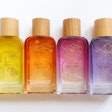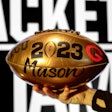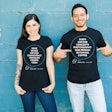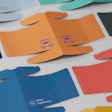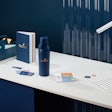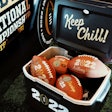There was a time when you couldn't walk out of a New York party without being handed a bag of swag?a branded T-shirt, a few magazines, maybe some cosmetic samples. Those days are gone?sadly, for those of us who dislike buying our own shampoo?and now it's common to exit an event where the sponsor paid plenty of money for decor, food and entertainment, but didn't put out any colorful bags of goodies at the door.
That's not to say that guests are no longer watching for bags—or finding them—especially at events with a history of a packed bag, like Out magazine's Out 100 party. "People were certainly looking for gift bags [this year]," says Out promotions director Chip Stevenson. "They were fighting over them."
Indeed, as gift bags have become more elusive, they have also grown larger. And guests' expectations about what they'll find inside a bag have grown as well. "Gone are the days of the old paper bag with a magazine," says Samantha Haft of On 3 Productions, which has coordinated bags for the Independent Spirit awards and the Tonys. Guests now expect bigger bags with bigger products: While perfume samples in little vials were common once, now guests are only happy with full-size bottles.
"The celebrity events have driven this," says Christine Shaw, president of Snap Public Relations, a six-person firm that started a gift bag division called Snap Sacks about a year ago; the bags now account for 40 percent of the firm's business. As magazines like Us Weekly and In Touch have started to include photos of giant gift baskets used to lure celebrities to events,
partygoers now expect similar largescale loot, and they're not impressed with logoed T-shirts and branded tchotchkes.
"It's better not to have one than have one that's not good," says Lori Levine, of celebrity wrangling and gift bag company Flying
Television Productions. In April she put together baskets of loot worth $17,500—including a trip to South Beach, a cashmere sweatsuit and a Hello Kitty oscillating fan—for celebrity attendees at the release party for Janet Jackson's new album. But even unfamous faces who didn't make it into Page Six's account of the event walked out with stuffed bags.
As more companies have seen the marketing value of placing products in bags destined for A-list recipients, new companies have started to charge marketers to match them with their target audiences. Sometimes the practice of paying to give away products can surprise marketing execs who get calls asking them to donate merch to charity benefits. But they often come around to the idea. "If you were to place an ad in W or Vogue, it would cost you a lot of money, and we're a fraction of that," says Los Angeles-based In the Bag's Kevin Mohajer.
The growing goodie bag business shows the gift bag's transition from party afterthought into a strategic marketing tool. "It's an easier bag to sell for us if there's media exposure," says Jane Ubell-Meyer of Buzz Bags. "Is it important to be in the hands of socialites? Not so much anymore. It's important to be in the hands of celebrities, and even more important to be in the press."
—Chad Kaydo
Posted 05.26.04
That's not to say that guests are no longer watching for bags—or finding them—especially at events with a history of a packed bag, like Out magazine's Out 100 party. "People were certainly looking for gift bags [this year]," says Out promotions director Chip Stevenson. "They were fighting over them."
Indeed, as gift bags have become more elusive, they have also grown larger. And guests' expectations about what they'll find inside a bag have grown as well. "Gone are the days of the old paper bag with a magazine," says Samantha Haft of On 3 Productions, which has coordinated bags for the Independent Spirit awards and the Tonys. Guests now expect bigger bags with bigger products: While perfume samples in little vials were common once, now guests are only happy with full-size bottles.
"The celebrity events have driven this," says Christine Shaw, president of Snap Public Relations, a six-person firm that started a gift bag division called Snap Sacks about a year ago; the bags now account for 40 percent of the firm's business. As magazines like Us Weekly and In Touch have started to include photos of giant gift baskets used to lure celebrities to events,
partygoers now expect similar largescale loot, and they're not impressed with logoed T-shirts and branded tchotchkes.
"It's better not to have one than have one that's not good," says Lori Levine, of celebrity wrangling and gift bag company Flying
Television Productions. In April she put together baskets of loot worth $17,500—including a trip to South Beach, a cashmere sweatsuit and a Hello Kitty oscillating fan—for celebrity attendees at the release party for Janet Jackson's new album. But even unfamous faces who didn't make it into Page Six's account of the event walked out with stuffed bags.
As more companies have seen the marketing value of placing products in bags destined for A-list recipients, new companies have started to charge marketers to match them with their target audiences. Sometimes the practice of paying to give away products can surprise marketing execs who get calls asking them to donate merch to charity benefits. But they often come around to the idea. "If you were to place an ad in W or Vogue, it would cost you a lot of money, and we're a fraction of that," says Los Angeles-based In the Bag's Kevin Mohajer.
The growing goodie bag business shows the gift bag's transition from party afterthought into a strategic marketing tool. "It's an easier bag to sell for us if there's media exposure," says Jane Ubell-Meyer of Buzz Bags. "Is it important to be in the hands of socialites? Not so much anymore. It's important to be in the hands of celebrities, and even more important to be in the press."
—Chad Kaydo
Posted 05.26.04
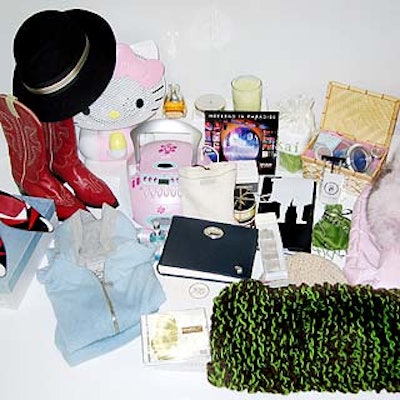
The gift bag from Janet Jackson's Damita Jo album release party included $17,500 worth of merchandise.












